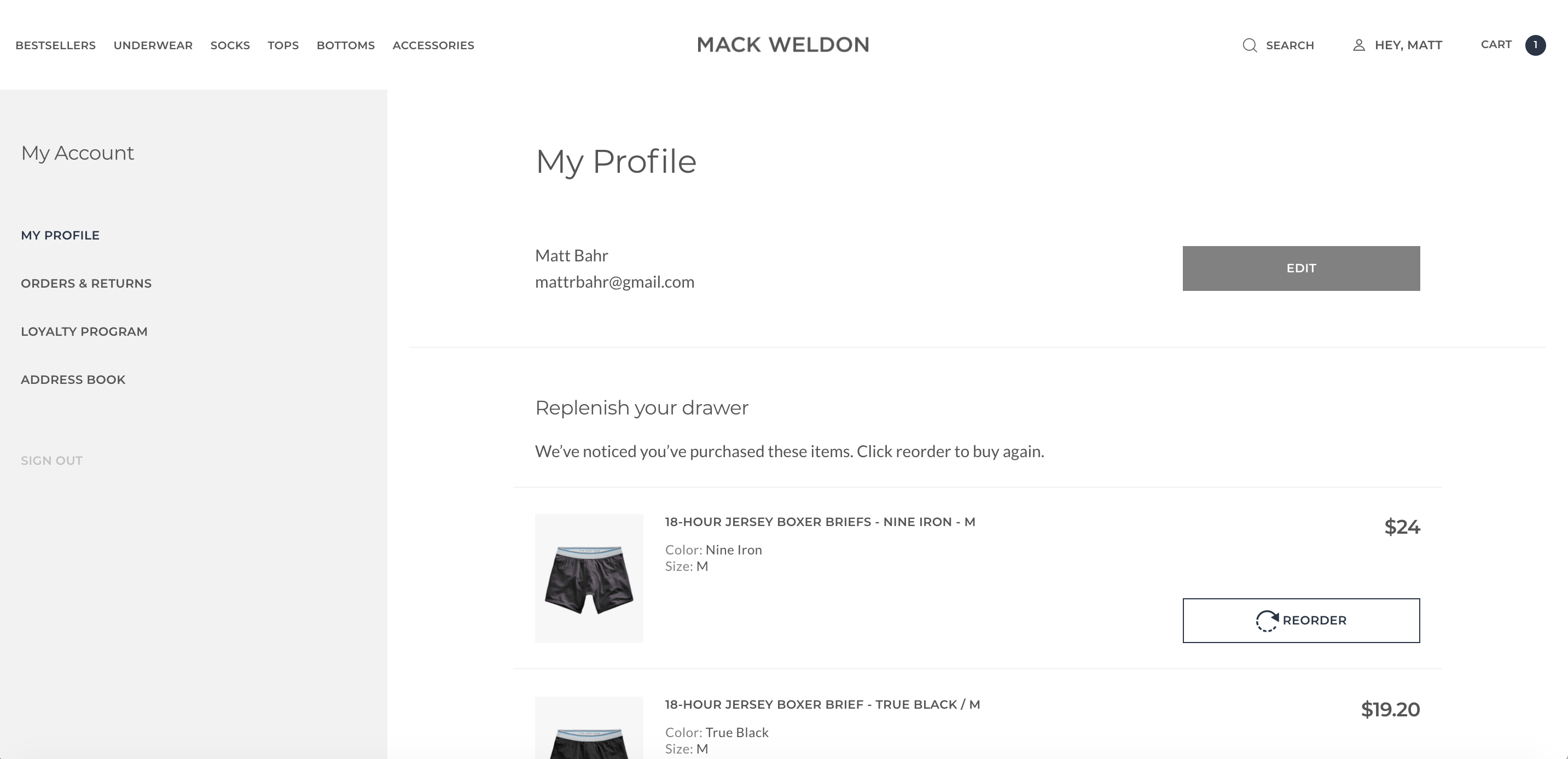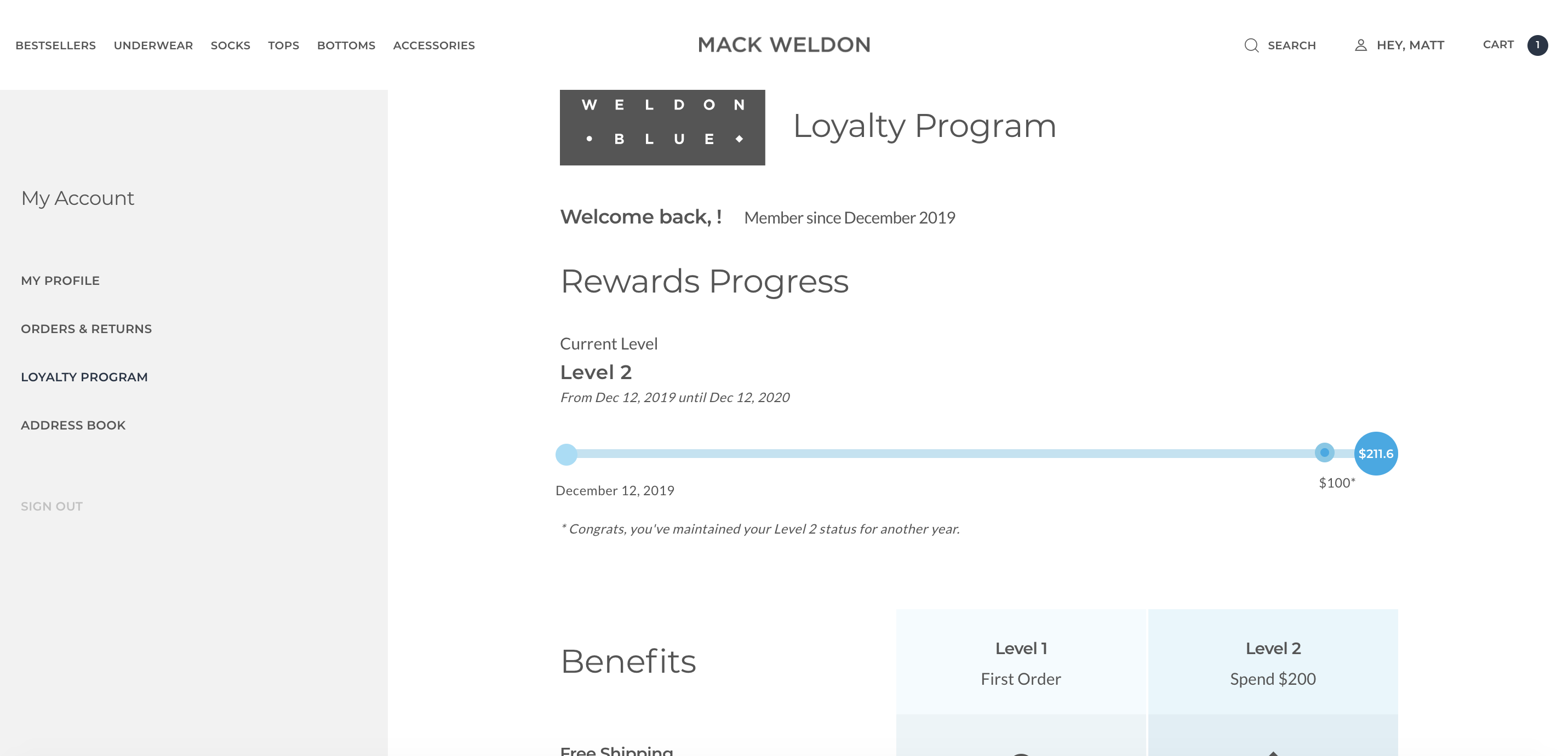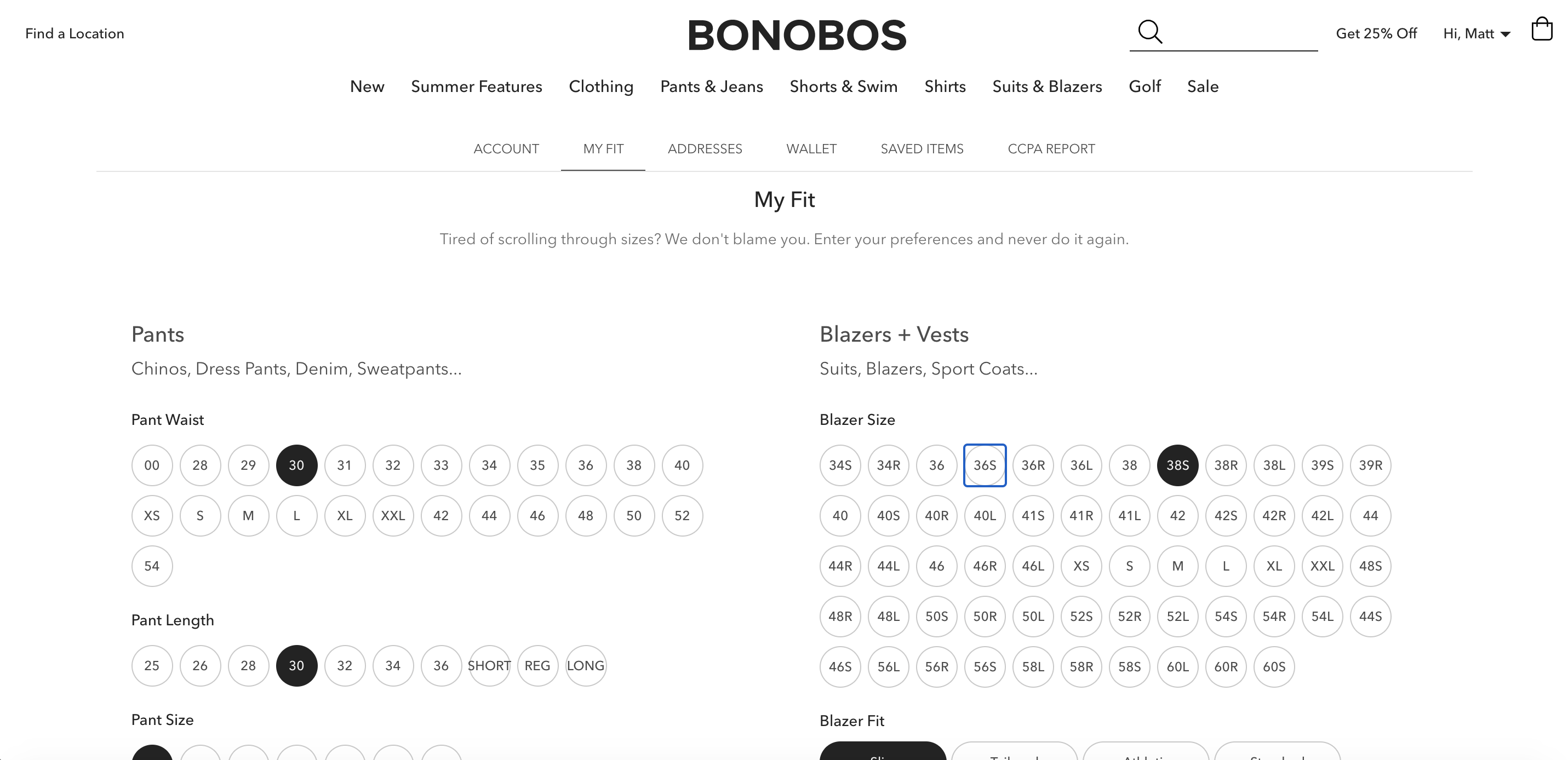Incentivize User Log-in With Valuable Account Pages
by Matt Bahr
When was the last time you logged into a DTC's brand's website? It's been a while, right? When you log in, the brand or online store knows exactly who you are and what you've purchased before, yet there's rarely any value after entering my username and password.

Shopify, the platform most of these DTC brands operate on, hasn't made it easy to reduce log-in friction either. Their focus on Shop Pay at checkout and not higher up on the funnel means users still need to log-in with a username and password. In the near future, their mobile app, Shop, may start providing more value to your existing customers than you can.
Over the years, website personalization in ecommerce has morphed into a solution predicated on watching not listening to users. First we take every user action, page-view, click, transaction, etc, and push it into a black-box and in-return we get product recommendations and automated discounting. The "magic" has never really felt quite magical.
As transactions continue to move online, communication between store and customer dwindles. 1:1 relationships are no longer feasible. Product recommendations pre-internet weren't powered by complex algorithms but by store associates knowing a long-time customer's likes and interests.
Incentivizing User Log In
Stores have an opportunity to build better relationships and trust by creating better experiences for users who are logged in. Offer exclusive discount codes on account pages, pre-launch products only available to logged-in users, increased return window for loyal customers, the list goes on.
Right now, being part of brands' community, means following them on social and subscribing to their barrage of daily emails. Exclusivity on both channels seems forged. By building more interactive logged-in states, your customers will have the opportunity to interact with you in a way they couldn't have otherwise.
The best example I've seen of a great logged-in experience is Mack Weldon's. They clearly invested a lot of time and resources to optimize the account pages for repeat buyers (and they're only touching the tip of the iceberg with what's possible).

Their investment in a customer loyalty program and clearly communicating how it work is very much working (anecdotally, at least). The value is enough that I log in every time I go to the site.

They could easily push this experience to the next level by surfacing additional information about their loyalty program and my past purchase behavior throughout the site. A great example of this would be to show my previous purchased size on PDPs. Bonobos does an great job at this -- select your fit and the entire site is personalized to only show you what's in stock that fits you. Powered by user log-in.

Learn By Asking
Knowing why someone bought from you or who a purchase was for will certainly help you build a better bond and market to your customers. In the physical world, you Walk into a store and you often times hear "Who are you shopping for?" – this rarely happens online. Post-purchase, brands have the ability to ask these questions directly on the account page. Was this purchase a gift? Is this your size? Would you purchase this if we create it? The list goes on. It's all valuable data customers will happily give you, especially if you're transparent about how you'll use it and how it will improve their shopping experience.
Log-in Friction
Log-in friction still needs to be reduced. Companies like Fast are certainly focused on doing this as they see the value in allowing consumers to never have to remember another password again. Until then, build a better account experience and customers will remember their passwords. They certainly do for Amazon.
Logged-In User Personalization Ideas
Below is a list of ideas you can implement to customize the user experience once a user is logged-in. All except product recommendations don't involve smart algorithms.
- Personalized return policy: provide loyal users with personalized return policies. I've chatted in length about this with Liesl Chang. There's a huge opportunity to change returns from a cost center to a profit center.
- My Fit: allow users to enter their fit information, then personalize the front-end shopping experience to what's available in their size. This can also feed into your email strategy, as well.
- Current Promotions: display current active promotions to users directly in their account page. Contrary to these living in emails, if users are in a buying mode they log-in to your site to see any deals.
- Access to Exclusive Products: create a deeper sense of exclusivity by creating collections only accessible to those who create accounts and are logged-in.
- Provide Faster Shipping Times to Loyal Customers: log-in to know when items will be delivered to you, get free shipping upgrades.
- Collect Additional Preferences: instead of tracking user click behavior simply ask them their preferences. They'll be grateful for it if it's clear why you're asking.
Increase Marketing Attribution Accuracy
If implemented correctly, well executed account pages are a win-win. You build a stronger connection to your customers and you'll also have access to a new data set that makes marketing and attribution much easier. I rarely see GA's User-ID view implemented given there's little value in doing so–no one logs in! By incentivizing user-login, a users path-to-purchase will become all the much clearer given we won't be using misleading cookie or device data to build the user journey. We transform user_id: 39391 into "Mary Smith".